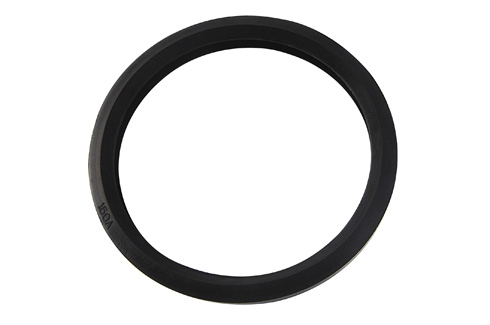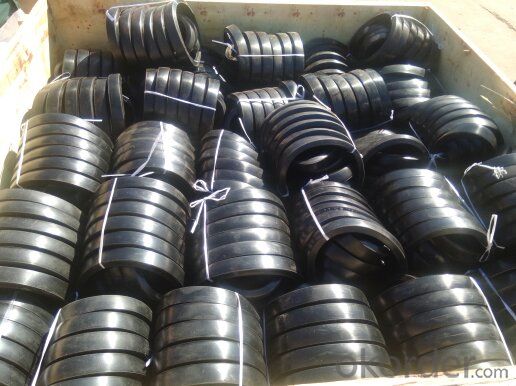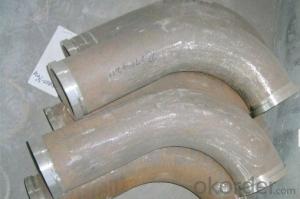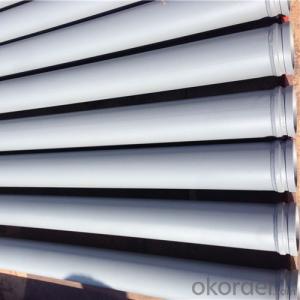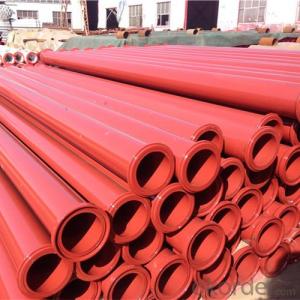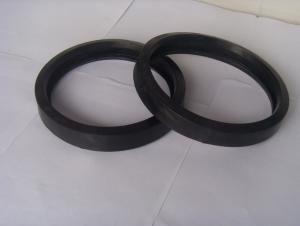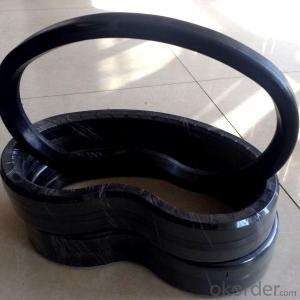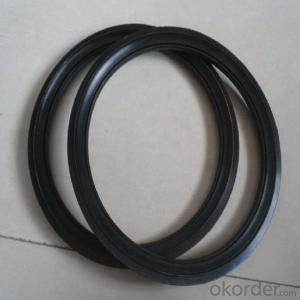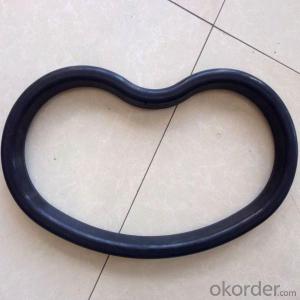Concrete Pump Truck Parts Seal Ring Rubber Seal DN80-DN200
- Loading Port:
- China main port
- Payment Terms:
- TT OR LC
- Min Order Qty:
- 100 pc
- Supply Capability:
- 10000 pc/month
OKorder Service Pledge
OKorder Financial Service
You Might Also Like
Product Description:
Concrete pump truck parts rubber seal is used within the couplings, to help seal the pipe joint and prevent the concrete from leaking. Rubber seal has different size, like DN80, DN100,DN125,DN150,DN175,DN200 and so on.
Main Product Features:
It has high pressure series and low pressure series, any series are good quality. Rubber seal feature is Corrosion resistance, high temperature resistance, abrasion resistance, which material have natural rubber and Polyurethane.
Product Specifications:
Name: Gaskets
Size : DN50,DN80,DN100,DN125,DN150,DN180,DN200,from 2inch to 8inch.
Material: rubber, Polyurethane.
Service brands: PM,Schwing, Cifa, Kyokuto, Zoomlion, Sany etc.
Application: Used in concrete pump truck,concrete pump and pipeline connection seal in construction work equipment.
FAQ:
Q1: How do we guarantee the quality of our products?
A1: We have established an advanced quality management system which conducts strict quality tests at every step, from raw materials to the final product. At the same time, we provide extensive follow-up service assurances as required.
Q2: How soon can we receive the product after purchase?
A2: Within three days of placing an order, we will begin production. The specific shipping date is dependent upon international and government factors, but is typically 5 to 15 workdays.
Q3: Can you do OEM?
A3: Yes, we can do OEM as customers' request.
Q4: How to make a quick resolution for after service?
A4: OKorder and our manufacture both have overseas branches all-around of world, IF needed, the seller shall dispatch 2 engineers to the buyer's site for supervision of training. The buyer shall make available of necessary facilities & skilled personnel at site for training.
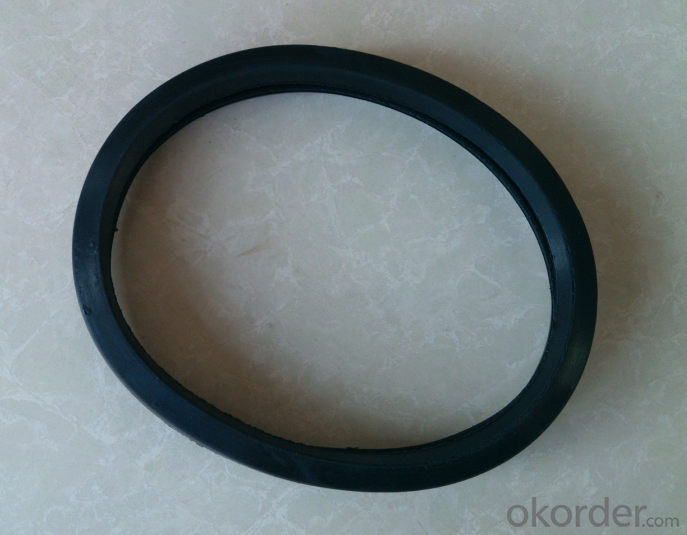
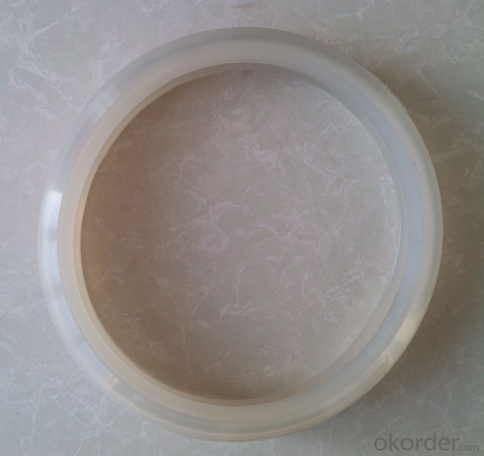
- Q: Are there any cost-effective alternatives to original concrete pump spare parts?
- Yes, there are cost-effective alternatives to original concrete pump spare parts. One option is to consider purchasing aftermarket parts, which are often produced by third-party manufacturers. These parts are designed to meet the same specifications and standards as the original parts but are typically available at a lower price. Another option is to explore the option of purchasing used or refurbished parts. These parts have been previously used but have been restored to a good working condition, offering a more affordable alternative to new parts. However, it is important to ensure that these alternatives are sourced from reputable suppliers to ensure quality and compatibility with your specific concrete pump model.
- Q: How can one ensure compatibility between concrete pump spare parts and the pump?
- To maintain the efficiency and performance of the equipment, it is crucial to ensure compatibility between concrete pump spare parts and the pump. Here are several steps to guarantee compatibility: 1. Start by identifying the correct model and manufacturer. Gather all necessary information about the concrete pump, such as the model number and manufacturer. This information will assist in finding spare parts specifically designed for that particular pump model. 2. Always opt for genuine spare parts. It is highly recommended to use authentic spare parts provided by the pump manufacturer or authorized distributors. Genuine parts are designed and tested to meet the pump's specifications, ensuring a perfect fit and compatibility. 3. Verify part numbers and specifications before making any purchases. Carefully compare the part numbers and specifications with the original parts to ensure compatibility with the pump. 4. Seek guidance from experts or the manufacturer's technical support team if unsure about the compatibility of certain spare parts. Their expertise and experience can provide valuable guidance and advice. 5. Regularly inspect and maintain the concrete pump to identify any wear or damage to the parts. This will enable the identification of specific spare parts that require replacement and ensure compatibility with the pump. 6. Prioritize quality and reliability when selecting spare parts, even if cost is a factor. Investing in high-quality parts guarantees better performance, durability, and compatibility with the pump. By following these steps, one can maximize the lifespan, performance, and overall efficiency of the concrete pump by ensuring compatibility between the spare parts and the pump.
- Q: Can concrete pump spare parts be coated with UV-resistant coatings for outdoor applications?
- Yes, concrete pump spare parts can be coated with UV-resistant coatings for outdoor applications. UV-resistant coatings are specifically designed to protect surfaces from the damaging effects of ultraviolet (UV) radiation, which can cause fading, cracking, and deterioration over time. By applying UV-resistant coatings to concrete pump spare parts, the parts can be safeguarded against the harmful effects of prolonged exposure to sunlight and other environmental elements. This helps to extend the lifespan of the spare parts and ensures their optimal performance in outdoor applications. Additionally, UV-resistant coatings can also provide added protection against other forms of weathering, such as moisture, temperature fluctuations, and chemical exposure. Therefore, coating concrete pump spare parts with UV-resistant coatings is a recommended practice to enhance their durability and maintain their functionality in outdoor settings.
- Q: What are the performance characteristics of concrete pump?
- The use of advanced S pipe distribution valve, automatic compensation for wear clearance, good sealing performance
- Q: What are the indications of a damaged concrete pump boom?
- The indications of a damaged concrete pump boom may include cracks or fractures in the boom structure, leaks in hydraulic lines, inconsistent or reduced pumping pressure, abnormal vibrations or shaking during operation, and difficulty in maneuvering or extending the boom arm.
- Q: How often should wear rings be replaced in a concrete pump?
- The frequency at which wear rings should be replaced in a concrete pump depends on several factors including the type of pump, the quality of the wear rings, the volume of concrete being pumped, and the operating conditions. In general, wear rings are components that experience significant wear and tear due to the abrasive nature of concrete. As a result, they will eventually need to be replaced to maintain the pump's efficiency and prevent potential damage to other parts of the pump. Typically, wear rings should be inspected regularly during routine maintenance checks. The wear patterns and extent of damage will determine whether replacement is necessary. In some cases, wear rings may last for several thousand hours of operation, while in others, replacement may be required more frequently. It is recommended to consult the pump manufacturer for specific guidelines on wear ring replacement intervals based on the pump model and operating conditions. They may provide recommendations based on their expertise and knowledge of the pump's design and performance. Ultimately, the goal is to ensure that the concrete pump operates smoothly and efficiently, minimizing downtime and maximizing its lifespan. Regular inspections and proactive replacement of wear rings when necessary will help achieve this objective.
- Q: How often should concrete pump hydraulic motors be inspected and replaced?
- Concrete pump hydraulic motors should be inspected regularly, ideally every 500 to 1000 hours of operation, to ensure they are in good working condition. However, the frequency of replacement depends on various factors such as usage intensity, maintenance practices, and the quality of the motor. Generally, hydraulic motors can last for several years if properly maintained, but if any signs of wear, leakage, or reduced performance are observed, it is recommended to replace them promptly to prevent potential breakdowns or accidents.
- Q: What is the importance of a good quality concrete pump seal?
- A good quality concrete pump seal is of utmost importance for several reasons. Firstly, it ensures the efficient and reliable functioning of the concrete pump. The seal is responsible for preventing any leakage or loss of pressure during the pumping process, which can lead to delays, inefficiencies, and potential damage to the pump itself. Moreover, a good quality seal helps maintain the integrity of the concrete being pumped. Concrete is a mixture of various materials, including water, cement, aggregates, and additives. To achieve the desired strength and durability, it is crucial that the concrete remains in its optimal state without any contamination or dilution. A high-quality seal prevents any external elements, such as water or air, from entering the pumping system and affecting the concrete's composition. Furthermore, a reliable seal contributes to the safety of the pumping operation. Concrete pumps are used in construction sites, where workers and equipment are present. Any failure or malfunction of the seal can lead to unexpected incidents, injuries, or damage to property. Therefore, a good quality seal provides peace of mind and reduces the risk of accidents. Lastly, investing in a good quality concrete pump seal can save both time and money in the long run. A durable and efficient seal minimizes the need for frequent replacements or repairs, reducing maintenance costs and downtime. It also ensures a smooth and continuous pumping process, allowing construction projects to be completed more efficiently and on schedule. In conclusion, a good quality concrete pump seal is crucial for the efficient functioning, integrity of the concrete, safety, and cost-effectiveness of a pumping operation. Therefore, it is essential to prioritize the selection and installation of a reliable seal to ensure the success and longevity of concrete pumping projects.
- Q: How often should concrete pump clamps be inspected and replaced?
- Concrete pump clamps should be inspected regularly, ideally before each use, to ensure they are in proper working condition. Depending on the frequency of usage and the operating conditions, replacement of clamps may be needed every few months or after a certain number of pumping hours. It is important to consult the manufacturer's guidelines and seek professional advice to determine the specific inspection and replacement schedule for concrete pump clamps.
- Q: What are the indications of a clogged or damaged concrete pump filter?
- Decreased pumping pressure, reduced flow rate, increased fuel consumption, and irregular or inconsistent concrete output are all signs that the concrete pump filter may be clogged or damaged. In more severe cases, a severely clogged or damaged filter can lead to pump overheating or complete shutdown. To ensure optimal performance and prevent potential pump damage, it is crucial to regularly inspect and clean or replace the filter.
Send your message to us
Concrete Pump Truck Parts Seal Ring Rubber Seal DN80-DN200
- Loading Port:
- China main port
- Payment Terms:
- TT OR LC
- Min Order Qty:
- 100 pc
- Supply Capability:
- 10000 pc/month
OKorder Service Pledge
OKorder Financial Service
Similar products
Hot products
Hot Searches
Related keywords



